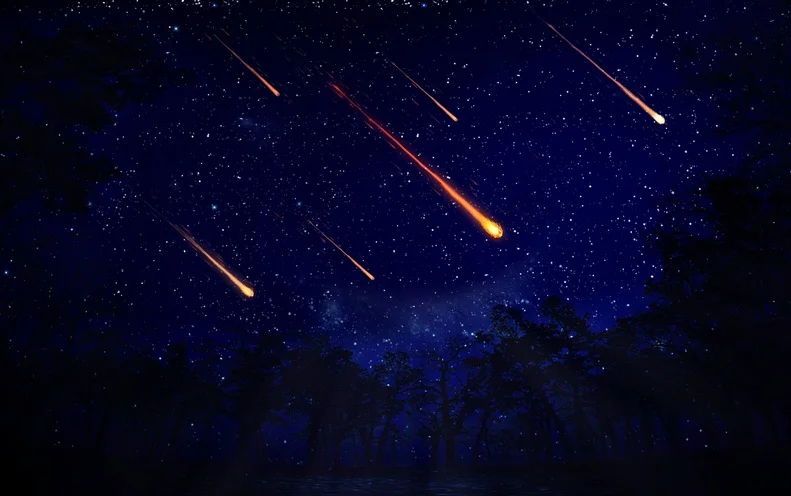Meteor, Meteorite, Meteoroid: Unraveling the Mysteries of Cosmic Visitors
Discover the fascinating world of meteor, meteorite, and meteoroid – celestial phenomena that have captivated humanity for centuries. Learn about their differences, impact on Earth, and the science behind these cosmic visitors.
Introduction
When we gaze up at the night sky, our eyes often catch fleeting glimpses of cosmic visitors – meteors, meteorites, and meteoroids. These celestial phenomena have fascinated humans for millennia, inspiring countless myths, legends, and scientific inquiries. In this comprehensive guide, we will delve into the captivating world of meteor, meteorite, and meteoroid, unraveling their mysteries and shedding light on the differences between them. From their origins in the vastness of space to their dramatic encounters with Earth’s atmosphere, we will explore it all.
Meteor Meteorite Meteoroid: Understanding the Basics
What are Meteoroids?
Meteoroids are small, rocky or metallic objects that wander through space. They vary in size, from tiny grains of sand to substantial boulders. These celestial wanderers are the building blocks of meteors and meteorites, and they travel through the cosmos at astonishing speeds.
The Journey Begins: Meteoroids Become Meteors
When a meteoroid enters Earth’s atmosphere, it transforms into a meteor. The intense friction generated by its high-speed entry causes the meteoroid to heat up and produce a luminous streak of light across the sky. This mesmerizing spectacle is what we commonly refer to as a “shooting star.”
Meteorites: Survivors of the Fiery Descent
While many meteoroids disintegrate entirely in the atmosphere, some survive the scorching journey to reach Earth’s surface. These remnants are known as meteorites. They come in various types, each providing valuable insights into the composition of our solar system.
The Distinction Between Meteoroids, Meteors, and Meteorites
Size Matters
The primary distinction between these cosmic entities lies in their size. Meteoroids are the smallest, typically ranging from a grain of sand to a few meters in diameter. Meteors are the luminous streaks we observe in the night sky, created when meteoroids enter Earth’s atmosphere. Meteorites are the surviving fragments of meteoroids that reach the Earth’s surface.
Composition
Meteoroids can be composed of various materials, including rock, metal, or a combination of both. In contrast, meteors are the result of friction and compression in the atmosphere, while meteorites retain their original composition from space.
Cosmic Origins
Meteoroids originate from various sources, such as asteroids, comets, or even the Moon and Mars. When they enter Earth’s atmosphere, they become meteors. Meteorites, on the other hand, are tangible evidence of these celestial bodies, offering clues about the composition of our solar system.
The Dance of the Universe: Meteor Showers
What Causes Meteor Showers?
Meteor showers are breathtaking celestial events where numerous meteors appear to radiate from a single point in the sky. These captivating displays occur when Earth passes through the debris left behind by a comet’s orbit. The tiny particles shed by the comet collide with our atmosphere, creating a spectacular show of meteors.
Famous Meteor Showers
- Perseids: Occurring in August, the Perseids are one of the most well-known meteor showers, originating from the comet Swift-Tuttle.
- Geminids: The Geminid meteor shower, in December, offers a dazzling display and is unique because it originates from an asteroid named 3200 Phaethon.
- Leonids: November’s Leonids are known for their periodic spectacular storms of meteors and are associated with the comet Tempel-Tuttle.
Meteorites: Windows into the Cosmos
Types of Meteorites
Meteorites are categorized into three main types: stony meteorites, iron meteorites, and stony-iron meteorites. Each type offers valuable information about the formation and composition of celestial bodies.
Scientific Significance
Meteorites have played a pivotal role in advancing our understanding of the universe. They contain clues about the early solar system’s conditions, the formation of planets, and even the possibility of extraterrestrial life.
The Impact of Meteorites on Earth
Craters and Catastrophes
Throughout Earth’s history, meteorite impacts have left a mark, creating colossal craters and occasionally causing catastrophic events. One famous example is the Chicxulub crater in Mexico, linked to the extinction of the dinosaurs.
Planetary Defense
Understanding meteorites and their potential impact hazards is essential for our planet’s safety. Scientists diligently track near-Earth objects (NEOs) and develop strategies to deflect or mitigate potential threats.
FAQs
What is the difference between a meteor and a meteorite?
Meteors are the streaks of light we see when meteoroids enter Earth’s atmosphere. If a meteoroid survives the journey and lands on Earth, it is called a meteorite.
Can meteorites contain valuable materials?
Yes, some meteorites, particularly iron meteorites, can contain valuable materials like nickel and cobalt.
Have meteorites ever brought life to Earth?
While it’s a topic of scientific curiosity, there is no confirmed evidence that meteorites have brought life to Earth. However, they may have played a role in delivering complex organic molecules.
How often do meteorites impact Earth?
Small meteorites enter Earth’s atmosphere daily, but larger impacts that could cause significant damage are much less frequent, occurring once every few thousand years.
Are meteor showers dangerous to Earth?
No, meteor showers are not dangerous to Earth. The particles in meteor showers are typically tiny and burn up in the atmosphere.
Can we predict meteor showers?
Yes, scientists can predict meteor showers with remarkable accuracy, allowing enthusiasts to plan their stargazing events.
Conclusion
In our exploration of the mesmerizing world of meteor, meteorite, and meteoroid, we’ve uncovered the secrets of these celestial travelers. From their origins in the depths of space to their fiery encounters with Earth’s atmosphere, these phenomena continue to captivate humanity’s imagination. Meteoroids become meteors, some become meteorites, and all leave us in awe of the wonders of the universe. As we gaze at the night sky, we are reminded that our planet is just a small part of a vast cosmic tapestry, and the dance of the cosmos continues to unfold above us.





